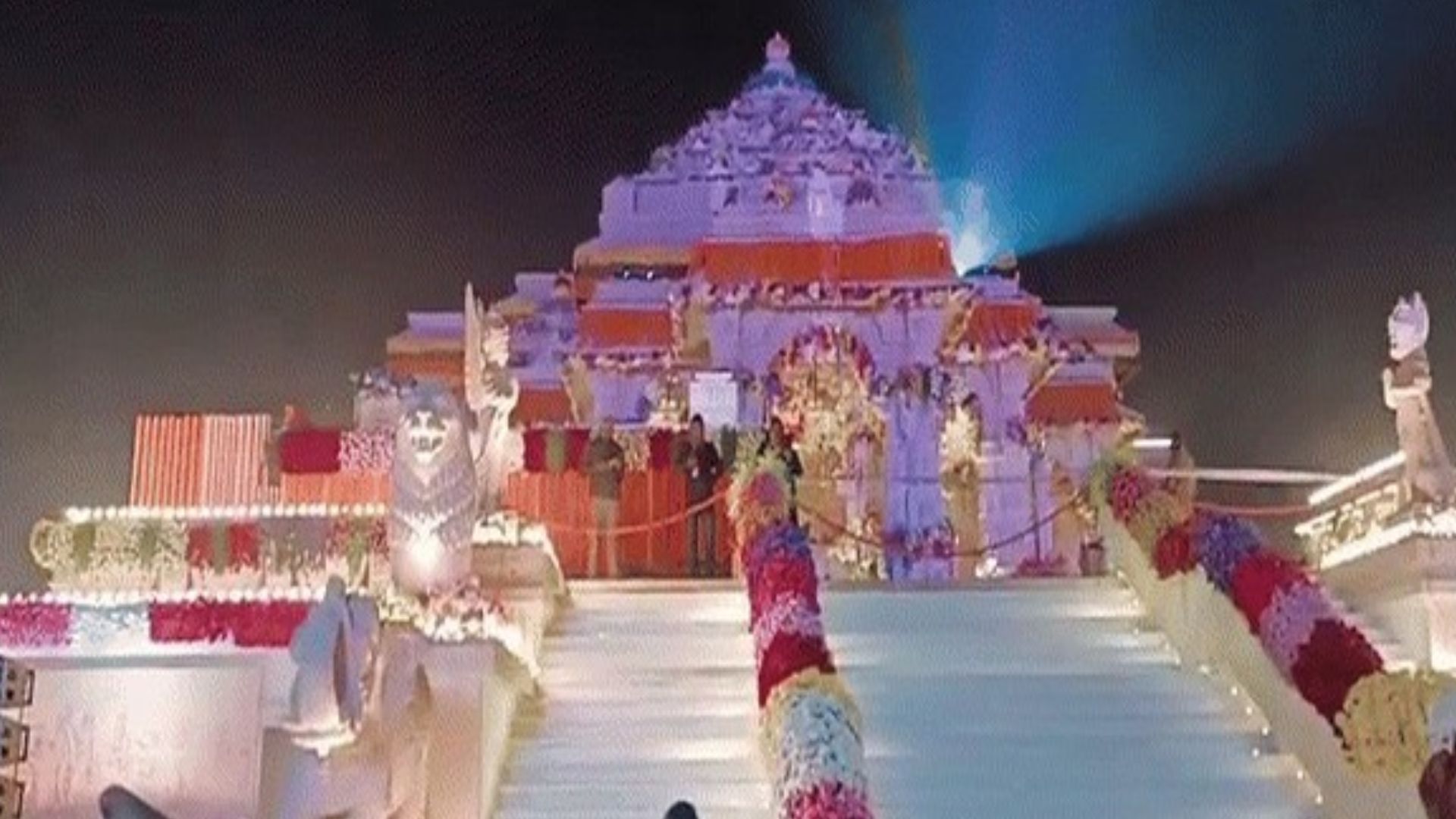Six months after the ‘Pran Pratishtha’ (consecration ceremony) at Ayodhya’s Ram Mandir, the Temple Trust and the Ayodhya administration are grappling with issues caused by heavy monsoon rains. Water leakage at the temple and potholes on the roads leading to it have posed significant challenges.
The city has been experiencing its first heavy rainfall of the monsoon season since Tuesday. This has resulted in water dripping in the ‘gudh mandap,’ a hall just outside the temple’s sanctum sanctorum, and has caused waterlogging and potholes on Ram Path and other areas.
Authorities are addressing these issues with heavy machinery to fill the potholes and drain the water. When The Indian Express visited the temple early Wednesday morning, rainwater was seen dripping from conduit pipes, under-construction staircases near the sanctum sanctorum, and the temporary roof over the ‘gudh mandap’. Puddles of water made the marble floor muddy and slippery.
The ‘gudh mandap’ is the last point up to which devotees are allowed. The temple’s chief priest, Satyendra Das, claimed there was no drainage system within the temple and reported leaks in the sanctum sanctorum. However, temple authorities attributed the dripping water to ongoing construction on the temple’s upper levels, where a hall and dome are being built.
Girish Sahasrabhojanee, the design and construction manager, explained, “You cannot expect 100 percent results from a structure that is nearly 80 percent complete. During the construction phase, there are bound to be some small issues, but there is nothing wrong with the basic design methodology.”
Temple Trust officials dismissed allegations of the lack of drainage, stating it was a deliberate choice to ensure that “holy water doesn’t mix with sewage”. They assured that the problems would be resolved once the Ram Darbar on the first floor and the dome are completed by year-end.
Champat Rai, general secretary of the Trust, denied allegations of a leak, clarifying that the water seen was entering from junction boxes due to ongoing work on electrical wiring, waterproofing, and flooring. He asserted that “excellent arrangements” had been made at the temple to drain rainwater, ensuring no waterlogging.
Near the ‘gudh mandap’, security personnel were seen next to a red bucket collecting rainwater. Sahasrabhojanee explained that the ‘gudh mandap’ is meant to be over 50 feet high with a dome on top. Currently, the single storey is just 20 feet, and ongoing upper-level work necessitates temporary covers for safety.
Visitors to the temple faced challenges with a waterlogged Ram Janmabhoomi Path, the half-kilometre stretch leading to the temple, which left behind sludge and mud after the water cleared. Additionally, the 13-km long road linking Sadatganj to Naya Ghat caved in at three places, with repairs underway.
Authorities, including Ayodhya District Magistrate Nitish Kumar and Mayor Girish Pati Tripathi, assured that repairs and solutions to waterlogging issues were being prioritized. The new Ayodhya Dham railway station, redeveloped at a cost of over ₹240 crore and inaugurated a month before the consecration ceremony, also experienced water accumulation on both the ground and first floors.
A Railways official, speaking anonymously, stated that the project has a one-year defect liability period, and minor issues like unsealed gates allowing water entry would be resolved soon.
4o







